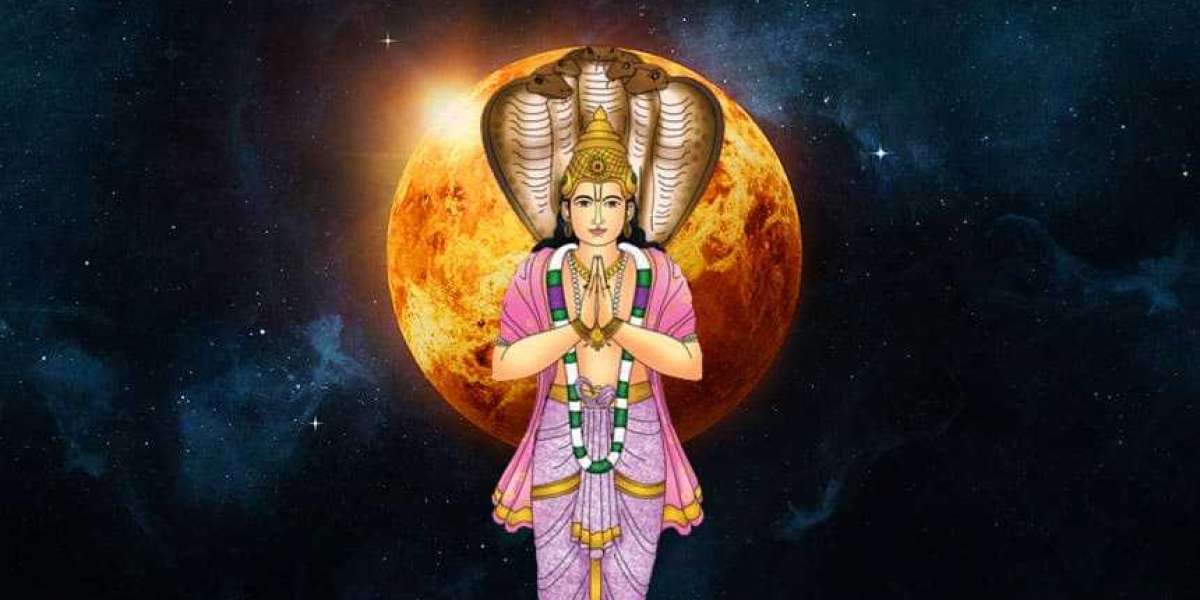In Vedic Astrology, the celestial bodies are not just massive astronomical entities but are believed to have profound influences on human lives. Among the nine primary astrological bodies, or "Navagrahas," Ketu holds a unique place. Ketu, often depicted as a headless body with a serpent's tail, symbolizes detachment, spiritual liberation, and karmic influences.
However, Ketu is also associated with health issues, particularly bone-related ailments. Performing Ketu Puja is considered an effective remedy for alleviating these issues. This blog explores the significance, procedure, and benefits of Ketu Puja for relief from bone diseases.
Understanding Ketu in Vedic Astrology
Ketu is considered a shadow planet, similar to Rahu, and is often referred to as the South Node of the Moon. It is associated with mystical knowledge, spirituality, and detachment from materialistic pursuits. In the astrological chart, Ketu's placement can indicate past life karma, spiritual tendencies, and certain health issues, especially those related to bones, joints, and the nervous system.
Bone diseases associated with Ketu include arthritis, osteoporosis, fractures, and chronic joint pain. These ailments are often seen as manifestations of deep-seated karmic influences and require spiritual and holistic approaches for relief.
The Significance of Ketu Puja
Ketu Puja is a ritualistic worship performed to appease the planet Ketu. The primary aim of this puja is to mitigate the malefic effects of Ketu and seek its blessings for relief from health issues, including bone diseases. By performing Ketu Puja, individuals can also enhance their spiritual growth, mental clarity, and overall well-being.
Preparations for Ketu Puja
Before performing Ketu Puja, it is essential to make certain preparations to ensure the ritual is conducted with the right mindset and environment:
- Consultation with an Astrologer: It's crucial to consult a knowledgeable astrologer who can analyze your birth chart and determine the necessity and timing of the puja. The astrologer can also provide insights into the specific bone-related issues influenced by Ketu.
- Choosing an Auspicious Date: The astrologer will recommend an auspicious date and time, known as "Muhurta," for performing the puja. Tuesdays and Saturdays are generally considered favorable for Ketu-related rituals.
- Gathering Puja Items: The following items are typically required for Ketu Puja.
- Ketu Yantra (a sacred diagram)
- Red or black cloth
- Sesame seeds
- Red flowers
- Incense sticks
- Oil lamp
- Fresh fruits
- Sweet offerings
- Silver serpent idol
- Holy water (Ganga Jal)
The Procedure of Ketu Puja
Ketu Puja involves a series of steps and rituals performed with devotion and precision. Here is a step-by-step guide:
- Purification and Setup: Begin by purifying the space where the puja will be performed. Clean the area and decorate it with flowers and rangoli.
- Place the Ketu Yantra on a clean red or black cloth on an elevated platform. Arrange the puja items systematically.
- Sankalpa (Intention Setting): Sit facing the south or west direction. Light the oil lamp and incense sticks. Take some water in your right hand and make a solemn vow (Sankalpa) to perform the puja with a specific intention, such as relief from bone diseases.
- Invocation of Lord Ganesha: Begin the puja by invoking Lord Ganesha, the remover of obstacles, to ensure a smooth and successful ritual. Chant the Ganesh mantra and offer flowers and sweets.
- Kalash Sthapana (Establishing the Sacred Pot): Fill a Kalash (pot) with water, place mango leaves around its neck, and a coconut on top. This symbolizes the presence of divine energy.
- Invocation of Ketu: Chant the mantra Om Sraam Sreem Sraum Sah Ketave Namah
- Offer red flowers, sesame seeds, and fresh fruits to the Ketu Yantra and the silver serpent idol.
- Abhishekam (Holy Bath): Perform Abhishekam by pouring holy water, milk, and other sacred liquids over the Ketu Yantra and idol, while chanting mantras dedicated to Ketu.
- Offering Prasad: Offer sweet items like laddus or other traditional sweets as Prasad to Ketu. Distribute the Prasad among the participants after the puja.
- Aarti and Concluding Prayers: Perform Aarti (a ritual of waving lighted camphor) to Ketu, accompanied by devotional songs or chants. Conclude the puja with prayers, seeking Ketu's blessings for relief from bone diseases and overall well-being.
Benefits of Ketu Puja for Bone Diseases
Performing Ketu Puja with dedication and faith can bring numerous benefits, particularly for those suffering from bone-related ailments:
- Relief from Bone Diseases: The primary benefit of Ketu Puja is the alleviation of bone diseases. The ritual helps mitigate the negative karmic influences causing these ailments and promotes healing.
- Enhanced Spiritual Awareness: Ketu is closely associated with spirituality and detachment. Performing the puja enhances spiritual awareness, leading to a more balanced and peaceful life.
- Mental Clarity and Focus: Ketu's blessings can improve mental clarity, focus, and concentration, aiding in better management of stress and anxiety.
- Improved Karma: By appeasing Ketu, individuals can resolve past life karmic issues, leading to positive transformations in various aspects of life.
- Protection from Accidents: Ketu Puja also offers protection from accidents and sudden mishaps, which can often result in bone injuries.
Conclusion
Ketu Puja is a powerful Vedic ritual aimed at alleviating the malefic effects of the planet Ketu, particularly in relation to bone diseases.
By performing this puja with sincerity and devotion, individuals can seek relief from ailments like arthritis, osteoporosis, and chronic joint pain. Moreover, the puja offers numerous spiritual and mental benefits, helping individuals lead a more balanced and fulfilling life.








